The flatbread with pecorino and sausage is a summary of the fragrances and flavors of my homeland, Tuscany! It’s a focaccia with little salt but with Tuscan PDO pecorino and fresh sausage inside, two of the most delicious ingredients. Perfect for a snack, to serve at dinner or for an aperitif, it’s also perfect in a buffet, perhaps accompanied by some sauce like the zucchini pesto. To make this flatbread, I “betrayed” my sourdough to use a high-quality dried sourdough, the Fragranzasol from Molino Colombo, the only one that convinces me to abandon my sourdough. Of course, it can be replaced with mother dough and the measurements can be found at the end of the recipe. If you fancy tasting a bit of Tuscany, turn on the mixer and let’s knead!
For other delicious focaccia and flatbread recipes, take a look at these links:
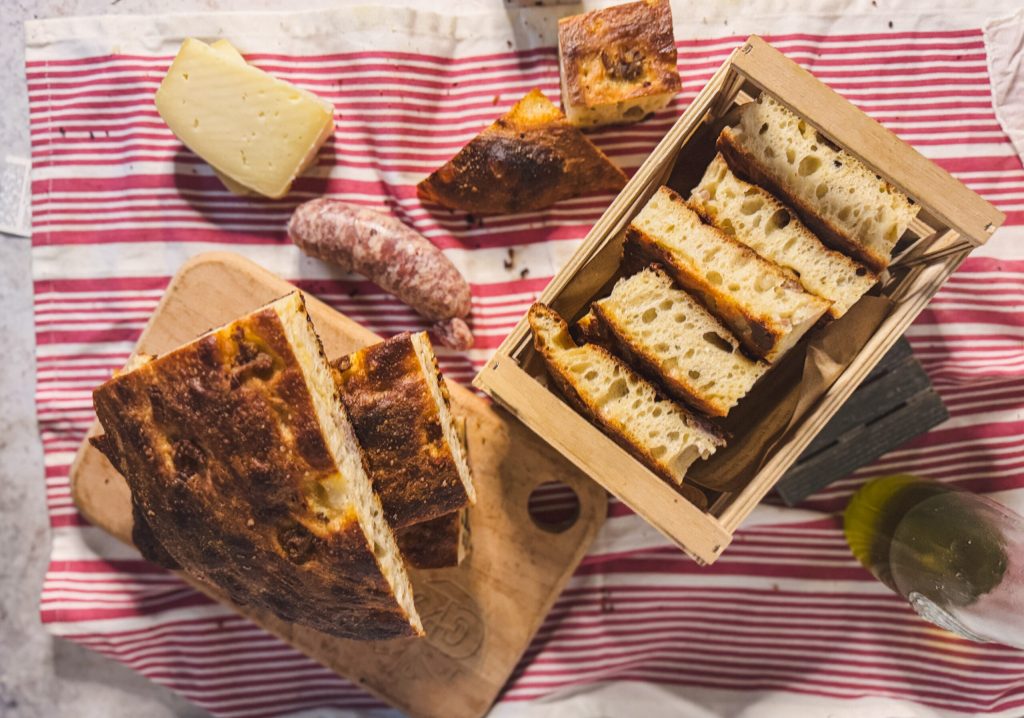
- Difficulty: Very Easy
- Cost: Very Cheap
- Rest time: 10 Hours
- Preparation time: 20 Minutes
- Portions: 8 People
- Cooking methods: Oven
- Cuisine: Italian
- Seasonality: Spring, Summer and Fall, All Seasons
Ingredients for the Flatbread with Pecorino and Sausage
This flatbread with pecorino and sausage is made with a mix of whole wheat flour and farro flour, which I personally love. Of course, the farro can be replaced with another flour like whole wheat, type 1, or semolina. In any case, changing the flour will require checking the hydration. Coarser flours like whole wheat may require more water, so it is advisable to keep 20 g (in addition to the water in the recipe) aside and evaluate at the end if it is necessary to add it or not.
- 280 g farro flour
- 220 g all-purpose flour
- 380 g water
- 11 g dried sourdough
- 30 g extra virgin olive oil
- 10 g sugar
- 5 g fine salt
- 120 g sausage
- 70 g Tuscan pecorino cheese
- 15 g extra virgin olive oil
- 10 g water
- 5 g fine salt
Tools
- 1 Mixer
- 1 Container
- 1 Pastry Board
- 1 Rolling Pin
- 1 Cheese Grater
- 1 Aluminum Baking Pan
- 1 Baking Paper
- 1 Basting Bottle
Steps
In a bowl, sift the two flours together and mix them.
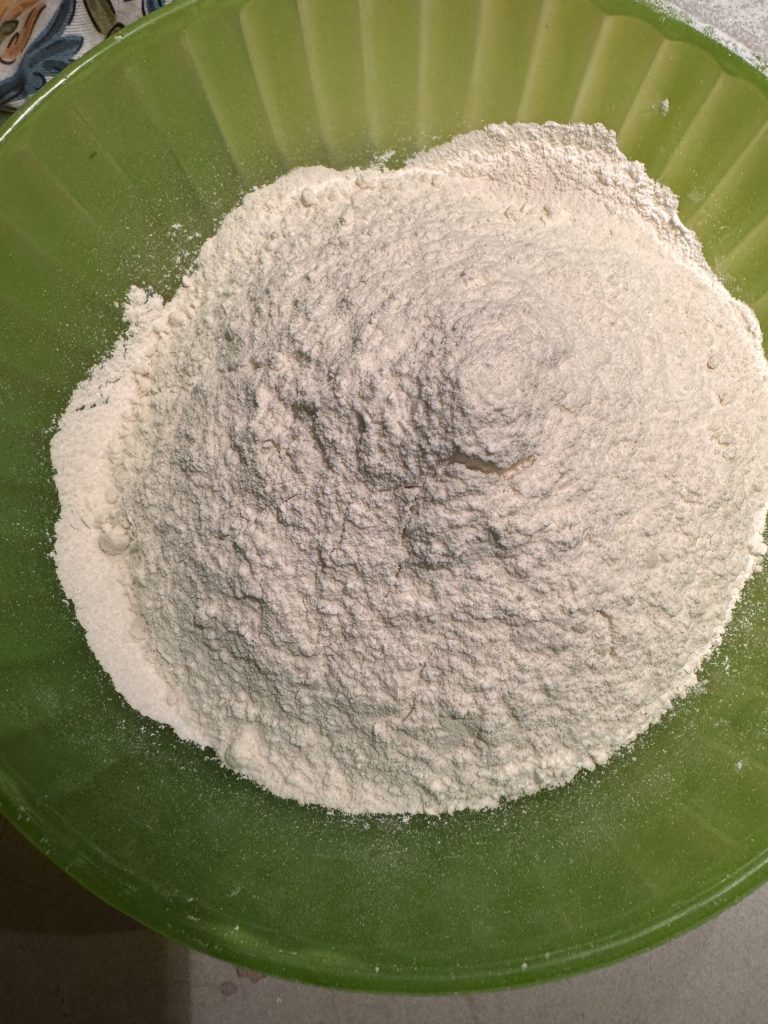
Add the dry sourdough and blend it with the two flours.
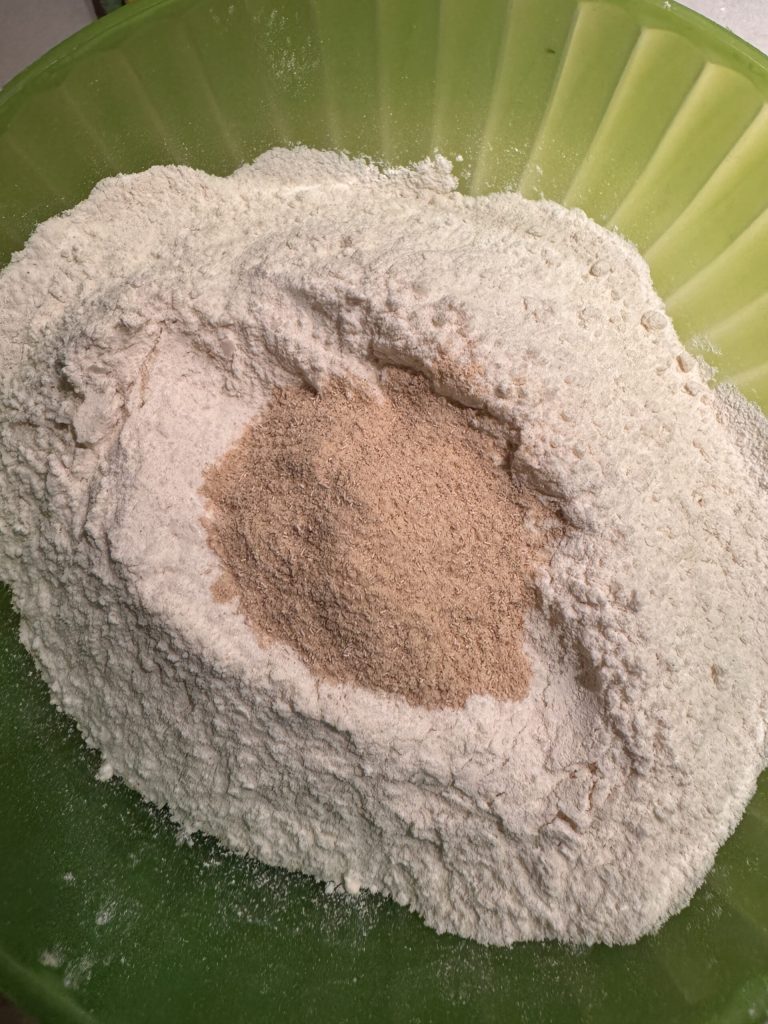
Transfer everything to the mixer, add the sugar and run the machine at low speed for a bit to mix well the dry ingredients and aerate them.
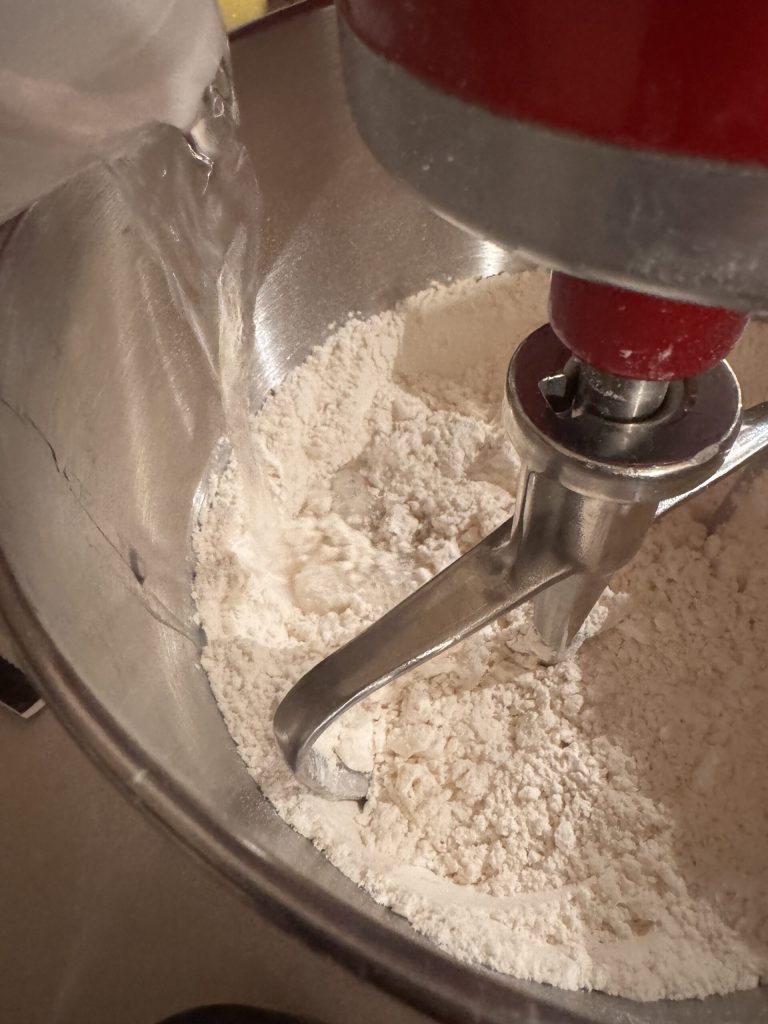
Add the water a little at a time. Once finished, replace the paddle with the hook to let the dough come together.
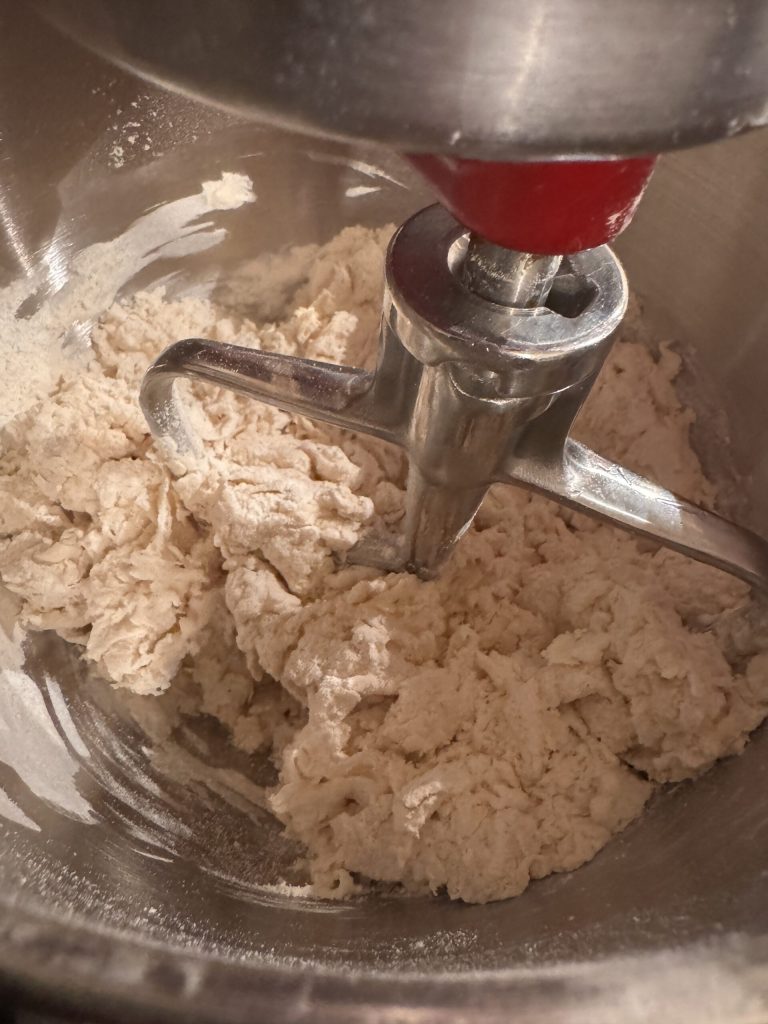
Once well combined, add the oil a little at a time and bring back to cohesion by increasing the speed. Close the dough with the salt and bring back to cohesion. When the bowl is clean and the dough is clinging to the hook (a sign of cohesion), turn off the machine and transfer the dough to a slightly oiled, covered container. After half an hour of resting, make a couple of folds in the bowl at half-hour intervals. Wait another hour, then place the dough in the fridge overnight.
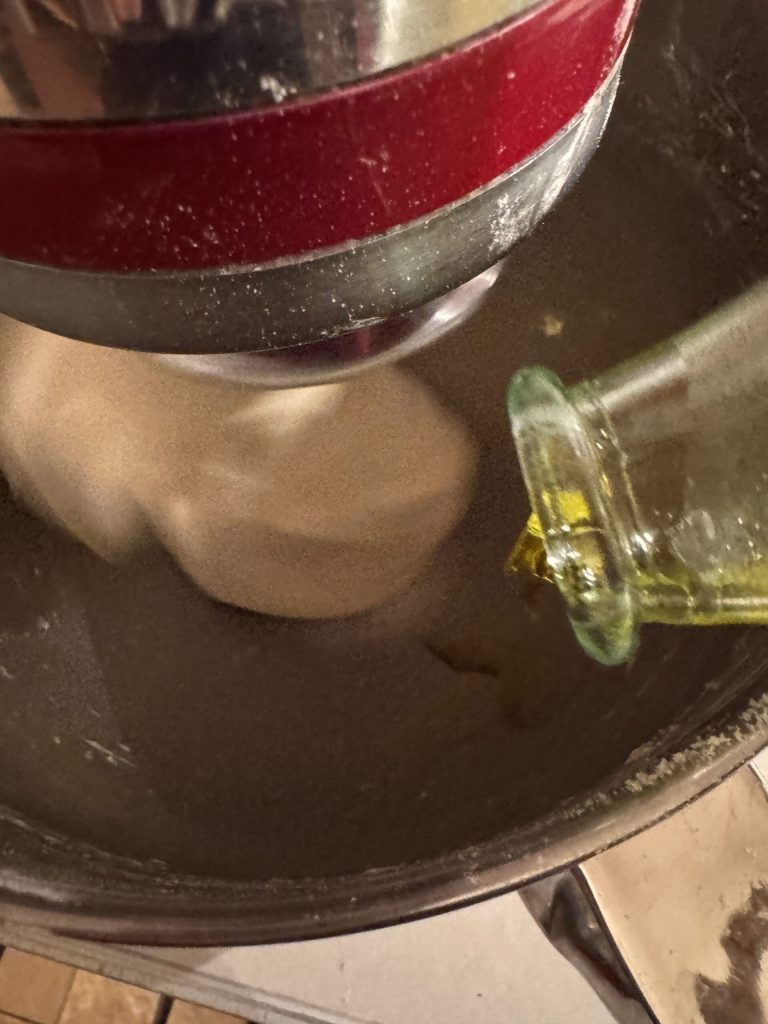
During the night in the fridge, the dough will mature and rise slightly. The next day, take the dough out of the fridge and let it come to room temperature to double.
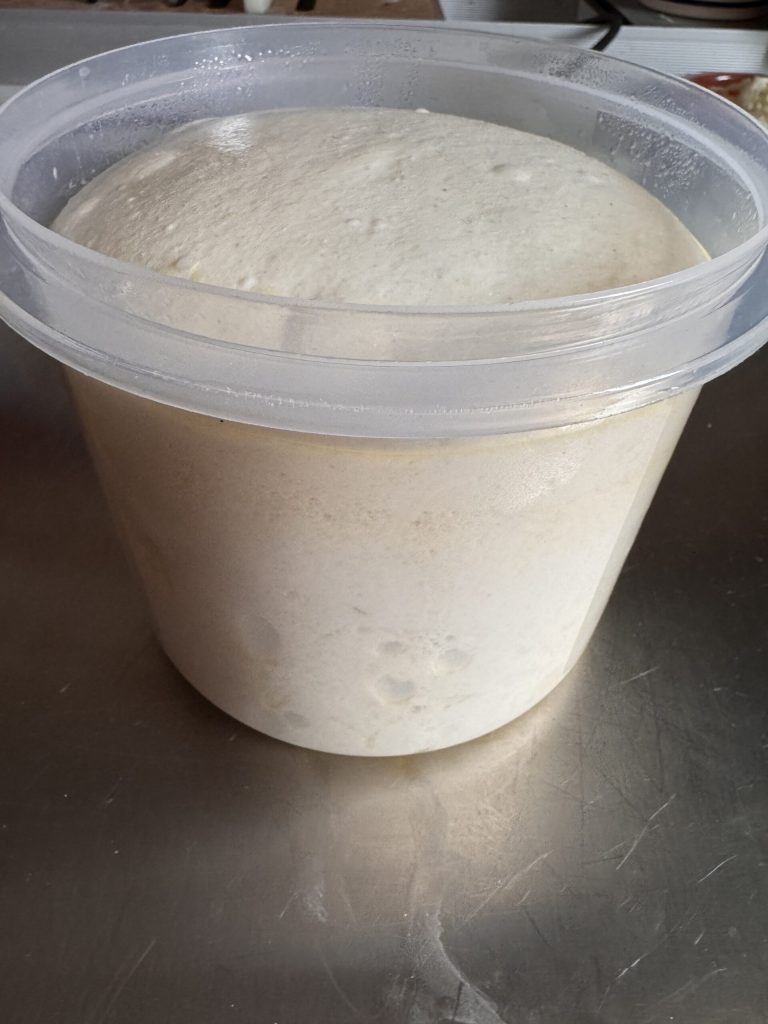
Deflate it and roll it out on the pastry board to make it as thin as possible. To do this, you need to pull it gently from all sides, lifting the various edges a bit, until you feel some resistance. Stop and continue from another side. For good lamination, the dough should become very thin and the size of the entire board. If you can’t do it by hand, you can use a rolling pin gently without pressing too hard.
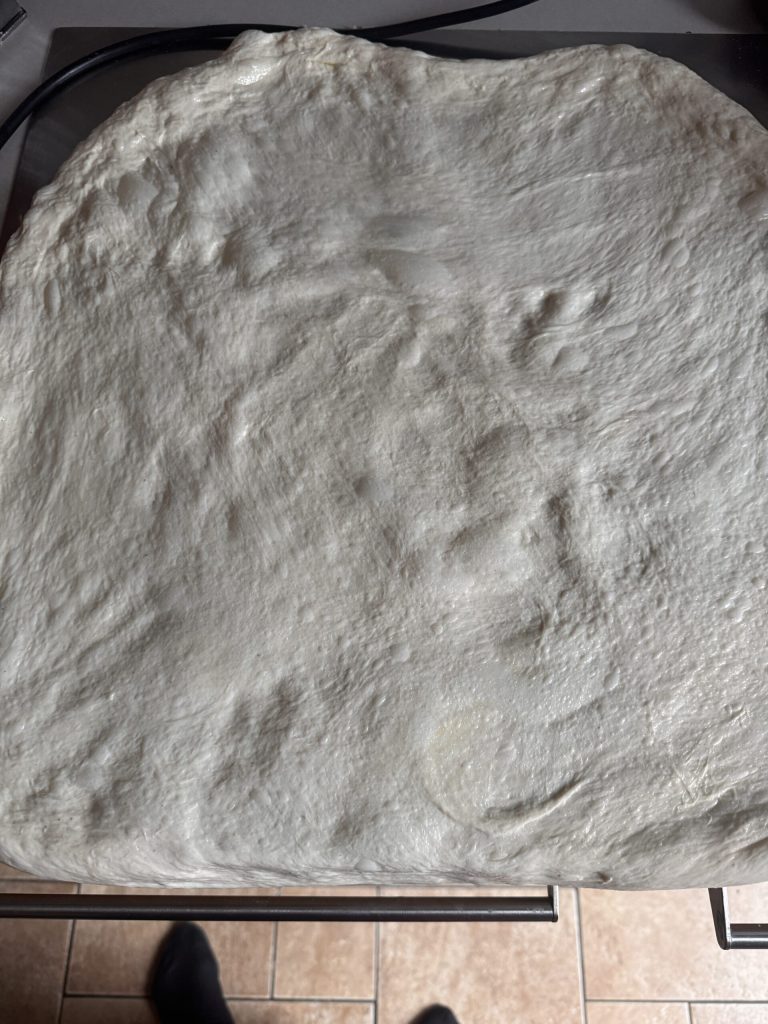
Break the fresh sausage and distribute 100 g uniformly.
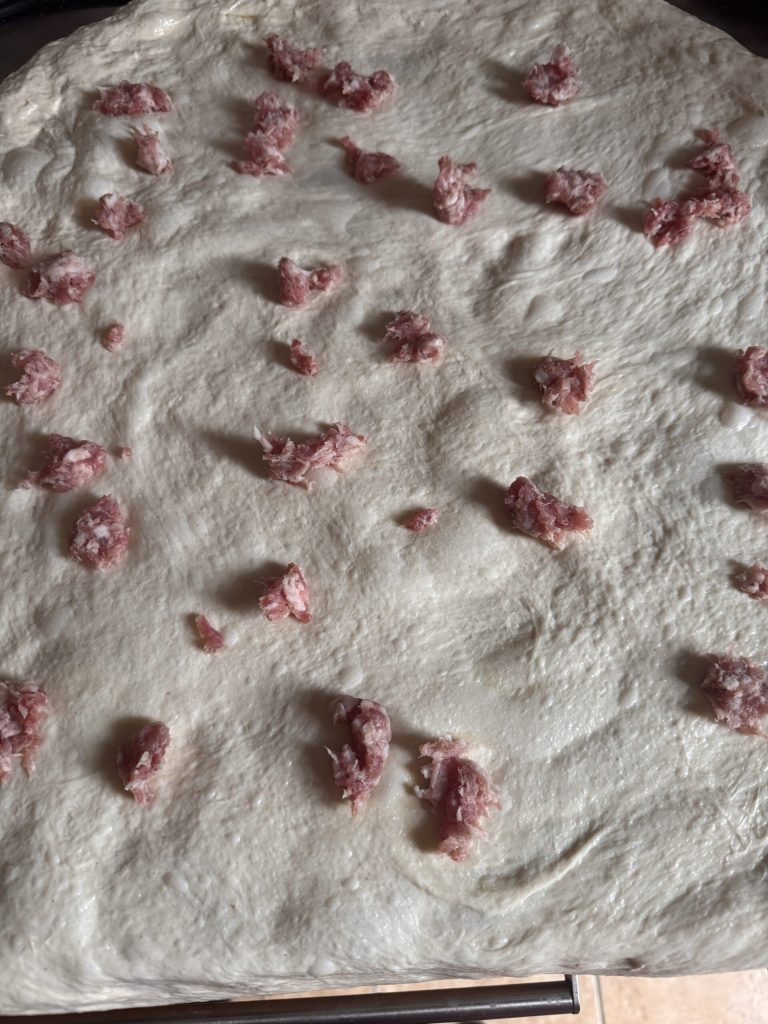
Grate the Tuscan pecorino and sprinkle the dough with the flakes. If you want a more stringy dough, you can add 30/40 g of mozzarella for pizza.
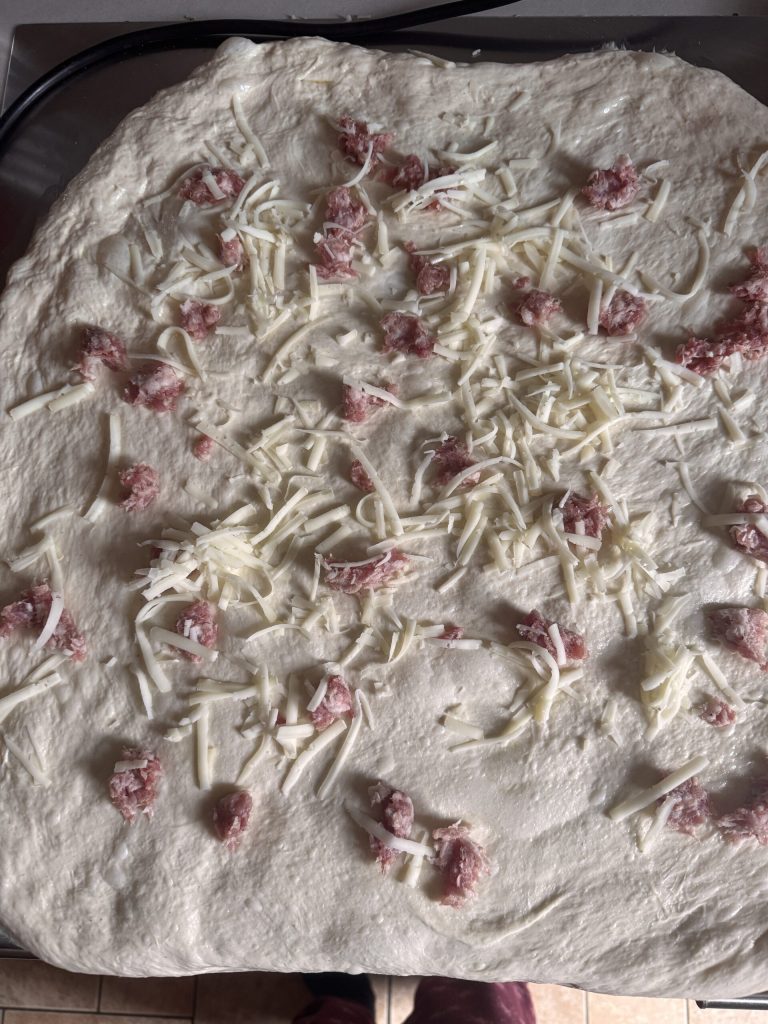
Close the dough from the outside to the opposite side, pulling the edges from all sides.
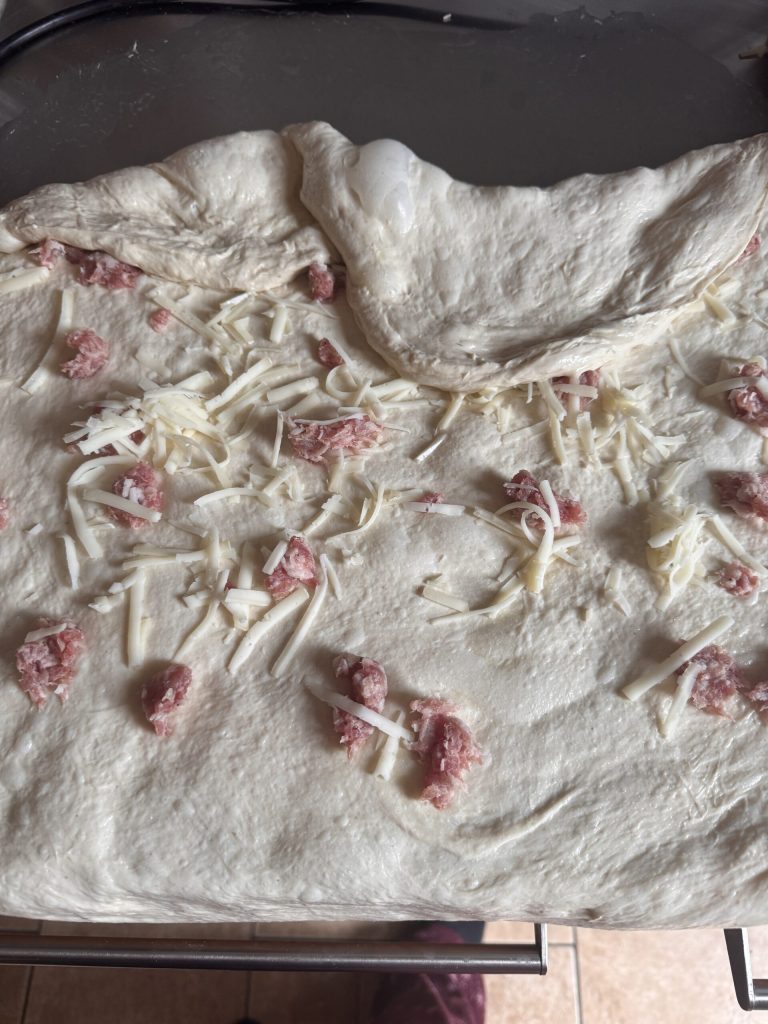
Shape it into a nice round ball. Cover it with its container and wait 30/45 minutes before rolling out.
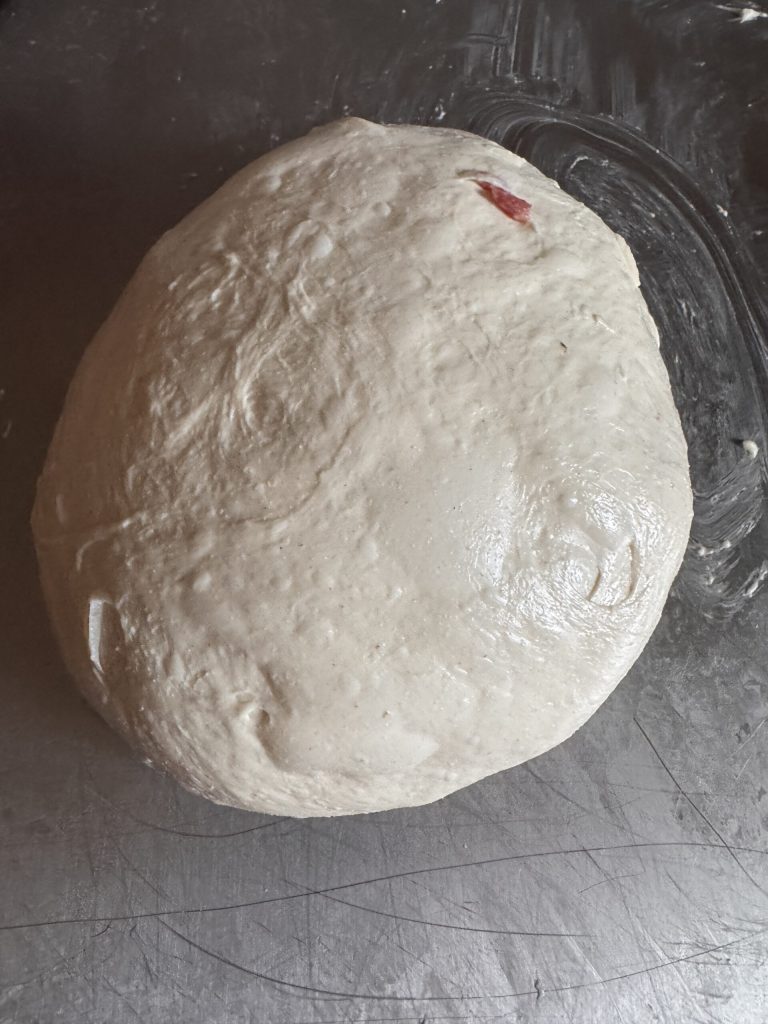
In a pan, place the baking paper and a drizzle of oil. Lay the dough on it and gently stretch it with the tips of your fingertips from the outside towards the center. Let it relax covered with plastic wrap.

After a quarter of an hour, finish the stretching, cover with plastic wrap, and let it double. Approximately, a couple of hours may be sufficient, but it also depends a lot on the ambient temperature.
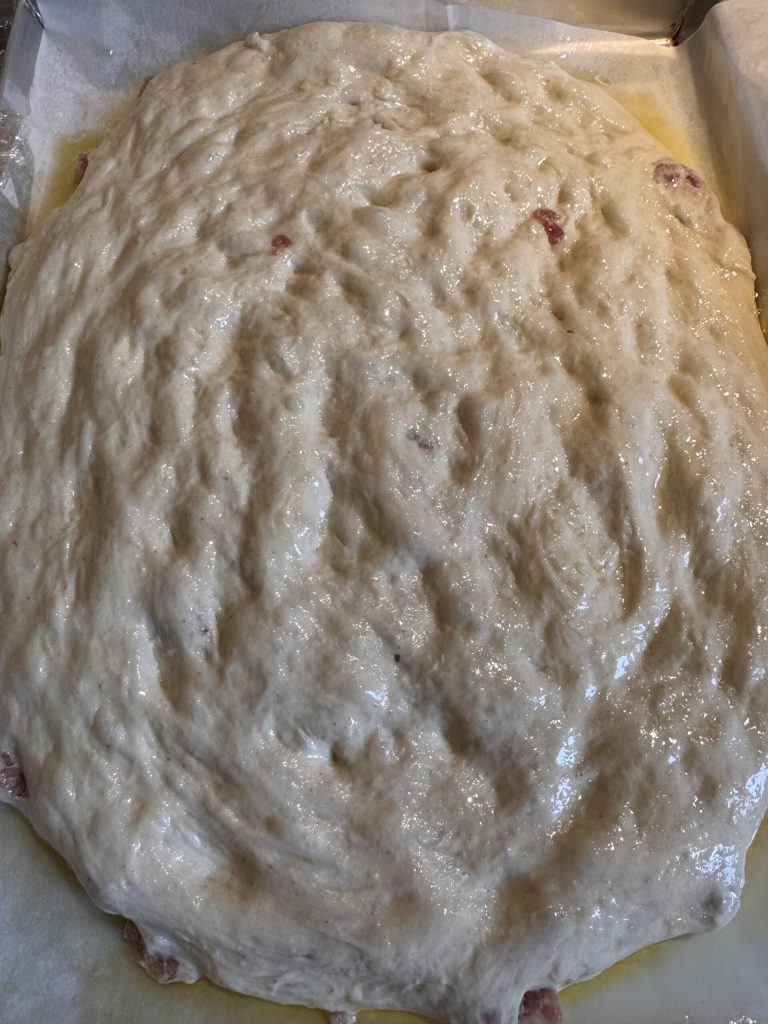
Turn on the oven to 428°F (220°C) half an hour before the end of the second rise. Prepare the brine by placing the water, salt, and oil in a special basting bottle. Shake well until creating an emulsion and sprinkle it over the dough. Let it rest, covered with plastic wrap.
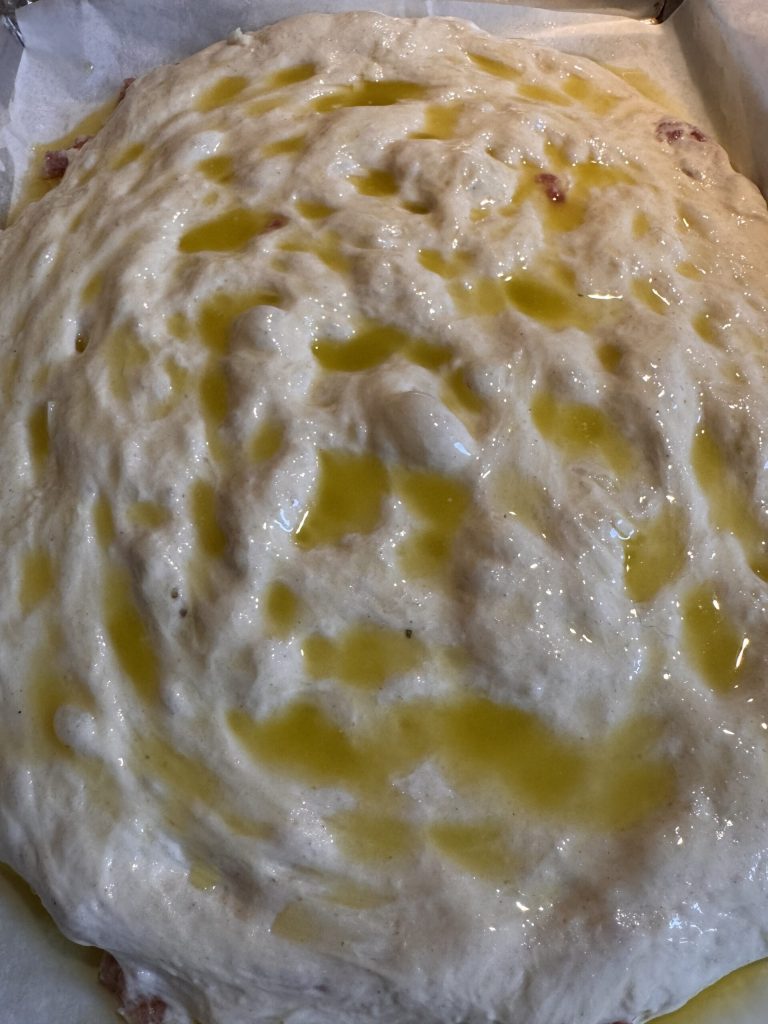
When the oven is hot and the brine has been slightly absorbed, sprinkle with the remaining sausage.
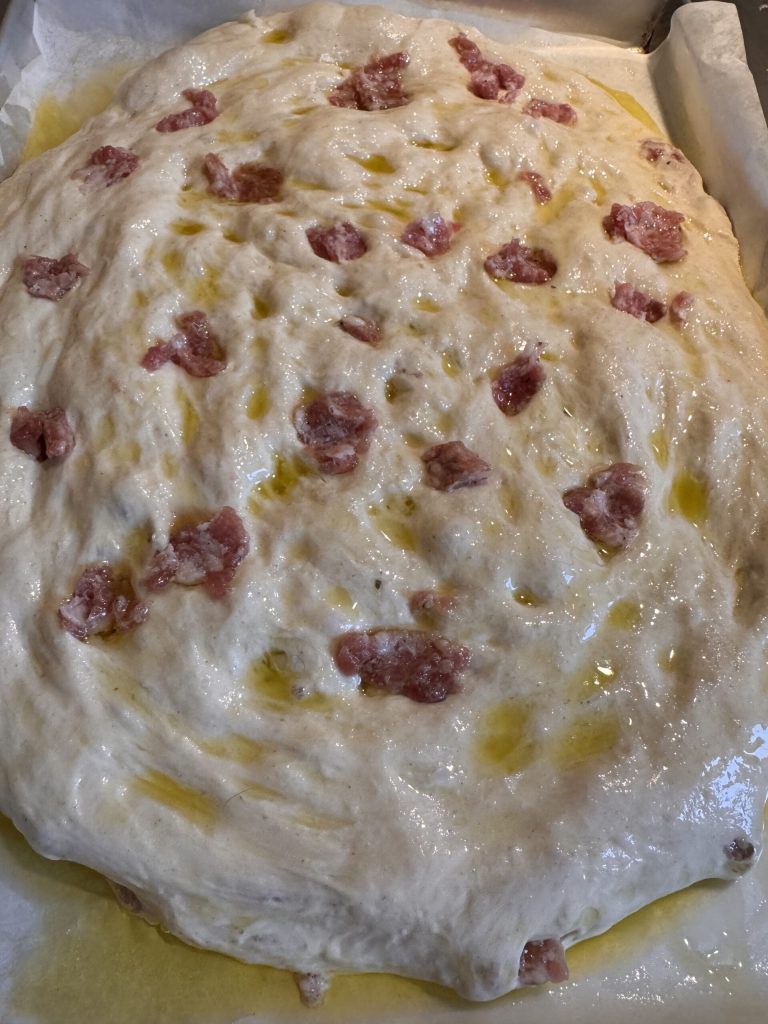
Drizzle with oil and bake. Cook for 15 minutes at 428°F (220°C) and then lower to 374-392°F (190-200°C) for another 10-15 minutes. These temperatures and times are relative to my oven. Obviously, each knows their own oven and knows, for example, if it is more powerful or not. Adjust times and degrees according to your own oven.
Once the cooking time has passed, remove from the oven and let it cool before slicing and serving at the table.
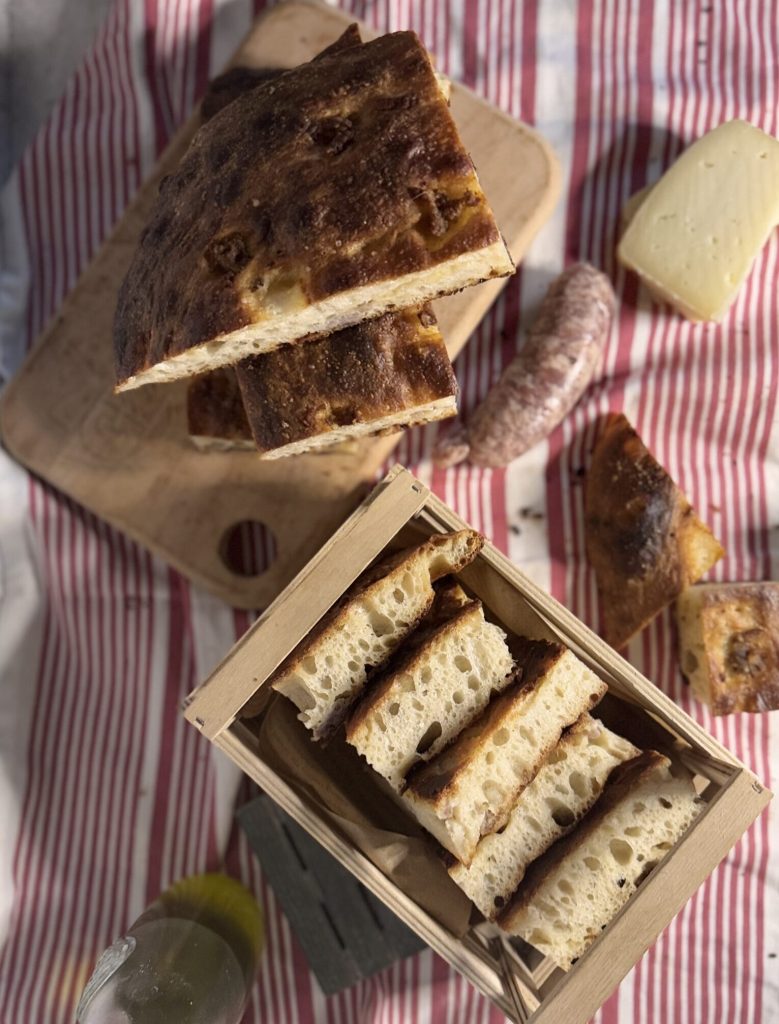
Storage of Flatbread with Pecorino and Sausage
The flatbread with pecorino and sausage keeps for 3/4 days inside a paper bag. It can also be stored in the freezer. In this case, just put it still frozen in a hot oven at 320°F (160°C) for about ten minutes to make it crispy again! For variations and substitutions, see the FAQs below… I’ll see you on my Instagram page!
FAQ (Questions and Answers)
Can I use sourdough?
Sure, about 80/100 g of refreshed and doubled sourdough depending on the season. Rising times could be extended, so it is advisable to keep an eye on it.
What can I replace pecorino and sausage with?
Just let your imagination run wild! For example, for a more “mountain” flavor with speck sticks and smoked scamorza cheese or, for a sharper taste, pancetta and pecorino romano. For a vegetarian version, you can opt for sautéed zucchini with pecorino in the dough and use zucchini flowers on the surface, adding a sprinkle of pistachio granules when serving.

